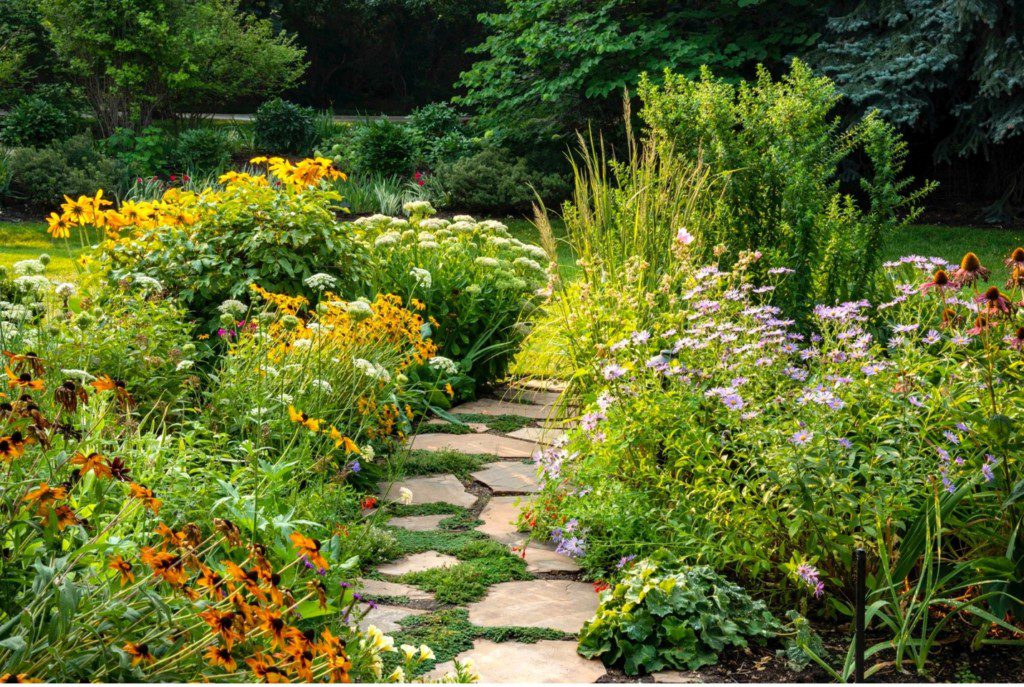If you’re planning a Denver landscape design for your home or commercial property, water conservation needs to be one of your top priorities. In arid regions, such as Colorado, water is a very limited resource, and thus, it will always be in high demand. That’s why it’s so important to be smart about how you use water throughout your garden, yard, and your overall property landscape design. Not only is it positive for the environment as a whole, but it can also help you save time and money.
But how can I conserve water when it’s so necessary to the health and beauty of my plants, trees, shrubs, flowers, and the landscape as a whole? Do I have to turn my yard into a barren desert? Not quite. Many landscapes utilize smart watering strategies to conserve this vital resource while still developing a beautiful outdoor space. Here, we’re taking a closer look at water conservation and how you can easily save water with your landscape design.
Why is Water Conservation So Important?
Now more than ever, it’s essential that we work to preserve our natural resources. And when it comes down to it, no resource is more important for all life on this planet than water. Water is essential for everything we do, and yet, with a growing list of environmental threats, pollution, and unchecked population growth, we’re simply running out of fresh, usable water. Especially in arid regions like the American West, water scarcity is a top concern.
Water is also essential for a thriving and beautiful landscape, which can make it seem odd that water conservation and landscape design can even go hand in hand. But in fact, more and more homeowners and property managers are looking for ways to responsibly use less water so that the entire environment (not just their yards) will prosper. And that’s the key here—it’s important for homeowners to remember that no matter where they live their landscapes are still integrally connected to the local climates and resources around them.

How to Conserve Water with Your Colorado Landscape Design
Looking for ways to conserve water in your outdoor space? Well, keep reading for some practical tips to cut down on your overall water usage no matter where you live.
Plan ahead: that’s right, sometimes some solid planning is an important first step when it comes to saving on water usage. Plant your flowers and get your garden started in the spring rather than the summer. This gives your plants more time to get adjusted before the extreme heat of the summer months sets in and improves the potential for your plants to thrive in your landscape. This will also require far less intensive watering during the early months of growth.
Use native plants: and while we’re on the topic of plants and flowers, try going native this time around by incorporating native flowers, native shrubs, native trees, and more to your space. These plants have evolved over countless years to do well in the exact local climate of your area. This means they’ll require less extra watering and have a much better chance of surviving and thriving because they’ve adapted to the amount of rainfall, sunlight, and the temperatures of your yard.
Reduce the size of your lawn: for many, a lush, green lawn is the epitome of the ideal landscape. But this doesn’t mean that you need to use grass throughout your entire landscape design. Mix it up and add some variety to your outdoor space and consider implementing ground cover that isn’t so thirsty. Use bricks, stone, or gravels for walkways throughout your space or for a small patio or dining area. Not to mention, with less grass throughout your landscape, that’s far less time spent mowing.
Add compost and mulch: incorporating compost and mulch to your trees, plants, and garden can protect your plants and help the roots retain moisture by preventing more evaporation. To reduce the potential of mulch mounds, give a little bit of space between the base of your trees and where you add the mulch.
Time your watering: avoid watering your plants or letting your sprinkler system go in the middle of the day when the sun’s up as this is high time for water loss caused by evaporation. If you do use sprinklers, only use them in the early morning or late afternoon where evaporation loss is down. Also, consider hand watering or giving your plants fewer but deeper soaks instead of sprinklers as this can help them more efficiently absorb and retain water.
Capture rain water: when it rains, take advantage of this by setting up rain barrels that allow you to capture this water and then reuse it throughout your property at a later time. Rain barrels are convenient, easy to set up, and can help you recycle precious water and use it for a variety of purposes throughout your space.
Conclusion – How to Conserve Water with Your Colorado Landscape Design
In response to the growing list of environmental threats our planet faces, we all need to do our part to protect our environment and preserve our precious, natural resources. And when it comes down to it, nothing on this planet is more important than water. Essential for survival for all forms of life, water impacts practically every single aspect of our daily lives and wellbeing—including how we design our Colorado landscapes.
Luckily, there are many ways that you can conserve water while maintaining a gorgeous landscape that is sure to be the envy of your neighbors. Plant your garden early in the spring, use rain barrels on your property, use native trees and flowers, and consider reducing your lawn cover by adding gravel, mulch, or other surfaces that require far less water. Incorporating xeriscaping principles throughout your outdoor space can help you create a more eco-friendly yard as a whole.






